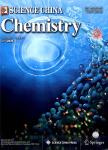Molecular basis for antifreeze activity difference of two insect antifreeze protein isoforms
Molecular basis for antifreeze activity difference of two insect antifreeze protein isoforms作者机构:Department of ChemistryBeijing Normal UniversityBeijing 100875China Faculty of ScienceBeijing University of Chemical TechnologyBeijing 100029China Department of BiochemistryQueen’s UniversityKingstonOntarioK7L3N6Canada
出 版 物:《Science China Chemistry》 (中国科学(化学英文版))
年 卷 期:2007年第50卷第2期
页 面:266-271页
核心收录:
学科分类:0710[理学-生物学] 07[理学] 09[农学]
基 金:Supported by the National Natural Science Foundation of China (Grant Nos. 26073011, 20231010, 20503002 and 20631020) the Major State Basic Research Development Programs (Grant No. G2004CB719900)
主 题:insect antifreeze protein synergistic effect antifreeze activity β-helix quantum chemistry molecular mechanics molecular dynamics
摘 要:The insect spruce budworm(Choristoneura fumiferana) produces antifreeze protein(AFP) to assist in the protection of the over-wintering larval stage and contains multiple isoforms. Structures for two isoforms,known as CfAFP-501 and CfAFP-337,show that both possess similar left-handed β-helical structure,although thermal hysteresis activity of the longer isoform CfAFP-501 is three times that of CfAFP-337. The markedly enhanced activity of CfAFP-501 is not proportional to,and cannot be simply accounted for,by the increased ice-binding site resulting from the two extra coils in CfAFP-501. In or-der to investigate the molecular basis for the activity difference and gain better understanding of AFPs in general,we have employed several different computational methods to systematically study the structural properties and ice interactions of the AFPs and their deletion models. In the context of intact AFPs,a majority of the coils in CfAFP-501 has better ice interaction and causes stronger ice lattice disruption than CfAFP-337,strongly suggesting a cooperative or synergistic effect among β-helical coils. The synergistic effect would play a critical role and make significant contributions to the anti-freeze activity β-helical antifreeze proteins. This is the first time that synergistic effect and its implica-tion for antifreeze activity are reported for β-helical antifreeze proteins.



